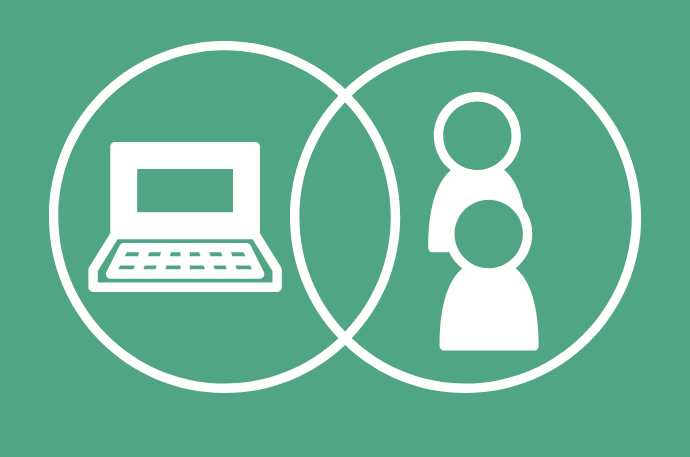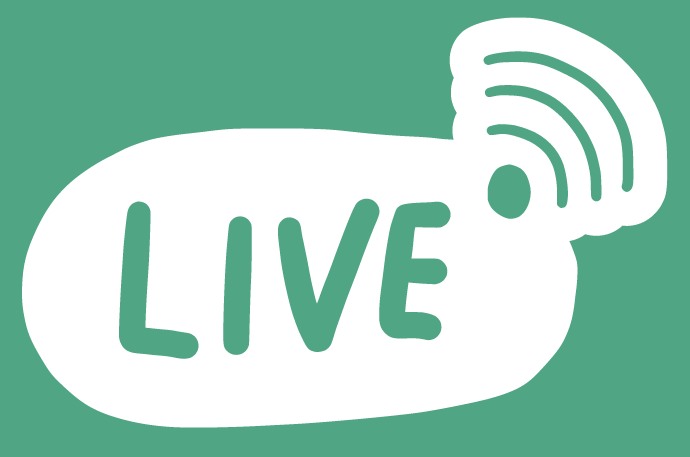Guide to Email Campaigns for Museums
Koy Tayler, BCMA Digital Strategy Coordinator
The BC Museums Association gratefully acknowledges funding support of from the Government of Canada.

An email campaign is a powerful marketing tool that can help keep your museum relevant and successful. Done well, these curated and consistent series of targeted impressions can motivate recipients to action.
Whether you are looking to increase event attendance, receive more donations, or advocate for community issues, email campaigns can be effective tools to improve your presence.

Marketing For Hybrid Events Best Practices
Explore this complimentary resource that will will help you clearly define your hybrid event, create community, and retain audiences for future sessions.

Live Virtual Event Delivery
Explore this complimentary resource on delivering live virtual events - Finding a streaming platform that fits your needs can help you deliver an exciting experience for audiences....
What is Email Marketing?
Email marketing is a form of direct and digital marketing that allows you to share a range of information. An important component of this is to understand how marketing trends resonate with your audience through email statistics provided by online platforms, such as Constant Contact, MailChimp, and Keela. This helps you recognize what good email performance looks like, which can be illustrated by key performance indicators (KPI’s) like the conversion rate or other indicators of success like the clickthrough rate.
Benefits of Email Marketing:
 Reduce costs associated with other forms of marketing to maximize resources. The average return on investment (ROI) is often four times higher than other forms of marketing like social media.
Reduce costs associated with other forms of marketing to maximize resources. The average return on investment (ROI) is often four times higher than other forms of marketing like social media.
Maintain regular contact to keep your organization foremost in the mind of audiences, including donors.
Build trust with audiences by regular communication.
Create targeted content that is relevant for audiences to help open and sustain lines of communication. Studies have shown that email marketing can produce higher conversion and click rates as compared to social media.
Reach a larger audience quicker and more effectively.
Accurately test interactions to see how messages perform. General feedback from audiences over social media can be misleading.
Avoid social media algorithms that determine what content is ‘relevant’ for users. These algorithms can make it difficult for your content to reach followers.
Convert Proposed Value to Engagement
You must communicate the value, or ‘why’, recipients should engage with your content to overcome a mountain of moments and reasons that say otherwise. Important elements that need to be clearly communicated in order to overcome these comparisons and immediate conclusions include the appeal, exclusivity, clarity, and credibility of your organization and specific call to action(s).
To get started, ask yourself the following questions:
Build Trust to Initiate Action
Email is a permission based marketing tool which means it is a privilege, not a right, to deliver messages to people who you think, actually, want to receive it. Recipients have the power over marketers and therefore, email marketing demands trust.
A great way to build trust is to humanize yourself as the sender. Clearly define your call to action and avoid generic language that can be easily used by another organization. Include supportive information, examples, and testimony to back-up your value. Another way to build trust is to proactively give recipients the option to unsubscribe. Consider providing this option for certain campaigns to avoid losing subscribers entirely. This is why list or contact management is important. Create sub-lists of contacts for a particular call to action instead of your entire database of recipients.
The conversion from inaction to action can often lead to friction which will result in people abandoning the call to action. Make the process simple and distraction free by removing unnecessary text or graphics, for example. If you couple this with emotion, there is a higher chance recipients will make a decision because of the type of interest or engagement you create.
It can take time to know what resonates most with your audience. Test the design, messaging, and timing of your next campaign to better understand what motivates recipients to engage and take action. Ultimately, you want to humanize and personalize your email campaign so recipients feel they are having a consistent conversation, tailored for them.
Importance of Optimization
Timing
Email campaigns provide multiple points of influence so it is important to prepare recipients to receive the messages as easily and quickly as possible. Not all conversations are created for any time. Make sure the information you share happens at a time and in a context that makes sense. As with most marketing campaigns, test and request feedback. This, and analytics provided through your choice of platform, can show what information resonates and when this occurs.
Prolonged periods of disengagement will increase the likelihood recipients will no longer resonate with your messages. Equally, sudden email communications after long periods of silence can cause recipients to unsubscribe so try to keep a consistent calendar of scheduled campaigns. This can be supplemented by additional moments of increased activity but it is important to note that high periods of ‘asks’ can cause people to unsubscribe as well.
If you send regular emails or know you will increase the amount sent out, make sure they do not accumulate too quickly or that your calls to action do not cultivate in too many requests or investments.
Email envelope
Make an immediate impression on recipients so they prioritize your email over others through the email envelope:
The goal is to override or play on people’s biases so they are willing to digest how your proposed value can benefit them or meet their expectations. The email envelope is the first point of contact so it needs to feel personalized to help optimize engagement. Focus on moments of small yes’s that highlight the value of your call to action.
The majority of email users look to the sender first and weigh this heavily on whether they will open the email or not. Equally important though, are the subject line and preview text.
Sender
Communicate with recipients on a personal level. Use a mailing system that allows you to automatically address a recipient by their first name. Additionally, use the name of a person from your organization as the sender because it makes recipients feel like the information is tailored to their needs. In other words, it is easier to indulge and reply to a person versus an organization, especially if it can be expected that this information would come from that person. Focus on how to best encourage folks to reply; this is often an over or under appreciated element of fostering relationships through email campaigns.
Subject Line
Create a conversation in the subject line that matches expectations. Recipients can be discouraged if the body of the email does not match what is in the subject line and this can decrease the likelihood folks take the desired action.
Good Subject Lines:
- Appeal to specific interests or needs.
- Create mystery. You want to entice people.
- Create perceived value or tangible utility. “Is this useful or unique?”
- Use a conversational tone specifically for that person.
- Introduce time relevance like using the week or time of day salutations. This can create a sense of urgency and increase overall relevance.
Have authenticity. Make it sound like this is a meaningful conversation and avoid opportunistic or self-centred phrases that overtly push your call to action.
Preview Text
Although not required, the preview text allows you to further authenticate and personalize your message. Remember that people tend to treat digital interactions similarly to real life ones, so be narrative and use human cues that are commonly used in everyday conversation. This information will help recipients finalize their opinion and assumption about the email.
Key reminders:
- Meet their expectations. Do not over-sell your message.
- Involve the recipient in this dialogue to further personalize your email.
- Do not rely on feel-good stories or sentiments. Stick to the ‘what’ and ‘why’.
- Maintain some level of curiosity. Do not overshare.
Design the Email Body With Engagement in Mind
The design of your email campaign helps build context but, like with previous sections, it is important your design stays simple and clearly supports your message. On average, brief copy text out-performs emails that contain a character count above 150. Too many elements or lengthy text can discourage engagement and feel impersonal. Some email components that can cause this include headers, large logos, and images.
The human eyeline falls to the left of a page so keep important elements like registration forms, links, or other relevant information to this side. Only include what is absolutely necessary because certain elements can come across as spam and create what is referred to as “banner blindness.” Common examples of this are when text overlays an image or there are too many calls to action. Additionally, call to action buttons should be relatively descriptive so recipients know what to expect. This is an important way to build trust and ensure you do not over promise.
Test out what length of email best resonates with your recipients and consider what elements may distract from your message. Try to place elements in different locations, like lower down in the email, and find ways to break-up your message. Include contact information and a clear way unsubscribe to help build trust and provide additional opportunities to engage.
In summary:
How to Build Relevant Email Content
Use all elements of an email campaign to create a relevant introduction. Lean on common cues to convey internal (personal level of engagement) and external relevance (dates or events). The body of your email should make it clear what problem you can solve, that is specific to the recipient, and how (the purpose of the email). Ways to increase engagement and the likelihood recipients take action within the email body include:
Share incentives or provide reasons for engagement.
Include geographical relevance. This can help make it easier for recipients to visualize the benefits of taking action.
Include supportive evidence or validators to provide credibility.
Clearly communicate the value of engaging or taking action.
Include next steps because people want to know what they are getting into.
Test out what works well for you. For example, more ‘clicks’ can come from raw links than a call to action button or hyperlink.
Know your audience. How personal can you make the subject line without alienating some recipients? What kind of resources are they most likely to engage with?
Integration Beyond the Email
Context and continuity between the email and a landing page is key. Use similar language and design to help remove friction and build trust. Connectivity (in this case, more details about ‘what’ and ‘why’) helps keep momentum between opening the email and taking action once recipients reach a landing page.
The landing page or additional locations that are linked in your email are the places to reiterate the reason this information is being shared or provided. Include additional details to make a case for the service or resource. This builds on the idea that you can solve a specific problem for the recipient.
Mailing Lists
Canada’s anti-spam legislation (CASL) is an important piece of legislation marketers need to be aware of. It states that you cannot send unsolicited commercial electronic messages (CEMs) including email, SMS/text messaging, and private messages on social networking platforms. Before you send someone a commercial electronic message, such as an email, you must:
Express consent is actively given by the subscriber when they opt in to your mailing list until the recipient withdraws it.
Implied consent includes “existing relationships within the previous two years where express consent is not required.” Especially for nonprofits, express consent is typically the preferred form of consent.
Concluding Thoughts
Email marketing is an important tool that can help you build an online community and empower your partners. This form of communication is intentional marketing that can and should be inclusive of and tailored to diverse communities. Outside of composing your next email campaign, it is important to recognize and appreciate champions. These folks volunteer their leadership skills to actively support your cause, provide effective feedback, and make an impact in your community. Offer these passionate community members an opportunity to meaningfully contribute and recognize their impact. This is an important way to authentically cultivate community which ultimately allows you to provide more personal messages.
As previously mentioned, it is key to humanize and personalize your emails to increase engagement. Include non-verbal (timing and place) and verbal (flow or sequence/length) conversations that stress the exclusivity of your offer and touch on the impact or emotional appeal of engagement (be a good storyteller). Only provide resources of particular value. During the process of building community, you will better understand the work your recipients do and can then further tailor your message and its timing. You want recipients to feel that you have respected their time.
Take advantage of and create opportunities to respond via a follow-up email to further promote your value and cultivate community. Use data and track key performance indicators through online tools to help you increase the credibility and clarity of your message. Test what works best for your community. For example, see if you can weave passive offers such as existing advocacy opportunities or appeals into your campaign without losing subscribers.
Remember to keep things simple. For example:
- Limit decisions and steps.
- Remove competing calls to action.
- Optimize for mobile.
- Remove visual clutter.
- Provide only enough information to illustrate the value.
- Create context by using the same elements between emails and landing pages.
Email campaigns can be more than just newsletters or event invitations. You can create an experience: cultivate, welcome, align beliefs, connect through what you can offer.
If you would like support with your next email campaign or have any related questions, please contact us at bcma@museum.bc.ca.

